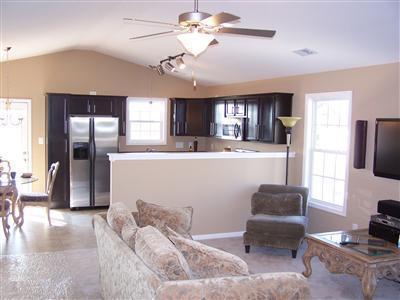These people can afford to buy a home, but instead are opting for built-to-rent communities that include an array of luxury amenities
After selling her family’s four-bedroom home in Atlanta and moving to Arizona for her husband’s job relocation, Gabrielle Brand toured single-family houses and condominiums, looking for a home for herself, her husband, Trevor Brand, and their 2-year-old daughter. The couple decided on a brand new, four-bedroom, 3½-bath home in Litchfield Park, a suburb of Phoenix. But instead of buying it, they are renting.
Since their home in Atlanta was custom built, the Brands were “very particular,” Mrs. Brand said, when choosing their new home. They were excited to move into their two-story stucco house in a gated subdivision called Las Casas at Windrose, she said. It has a fenced-in backyard, wood-like luxury vinyl flooring and a kitchen with light-gray granite countertops and stainless-steel appliances. The family is within walking distance of a playground, and they have views of the White Tank Mountains and downtown Phoenix. A major deciding factor: Las Casas is located within a highly rated school district. The Brands pay $2,969 a month. That is 47% more than the median rent of $2,018 as of March in metropolitan Phoenix for a four-bedroom, single-family home, according to CoreLogic.
The Brands are typical of the thousands of people—from millennials to empty-nesters—who can afford to buy a house but opt to rent. These renters are seeking out built-to-rent communities, entire developments of new, single-family homes that developers intend to rent, not sell. These tenants, who may be put off by the high price of single-family homes today, or the bidding wars, are instead drawn to the luxury features and finishes, amenities and good school systems these rental communities offer.
There is a premium for a single-family home that is built for rent compared with an existing single-family home that is eventually rented, said Tim Sullivan, senior managing principal at Zonda, a housing-market research firm. The premium can be 10% to 20% or more, he said, because the built-for-rent homes are new and generally constructed as part of larger, master-planned communities with amenities such as pools, walking trails, playgrounds and fitness centers.

